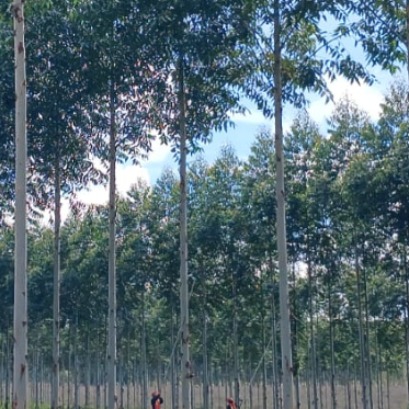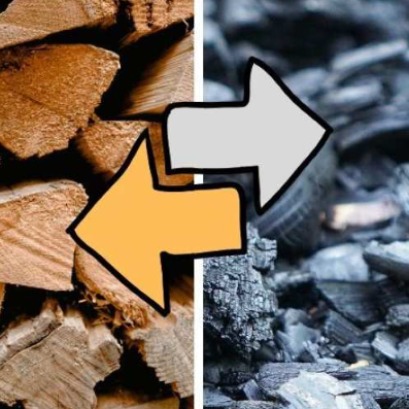
Brazil | Wood is positioned as the third most exported product of the Paraná agro-industrial sector
Wood represents the third export product of Paraná's agribusiness
With a total planted area of more than 1.1 million hectares, it produces, on average, 116.6 cubic meters per day. The State of Paraná is also responsible for approximately 16.5% of jobs in the forestry sector in Brazil.
The wood industry generates employment for more than 100,000 people in the 5,680 companies in the segment in the Paraná region of Brazil, and represents the third export product of agribusiness. It has a total planted area of more than 1.1 million hectares, which produces, on average, 116.6 cubic meters per day.
In order to preserve this heritage, in recent days the Forest Defense Technical Group (GT-Deflo) was created, which brings together public and private entities.
The group's task will be to establish guidelines and actions for the control, monitoring, prevention and eradication of forest pests that may endanger this segment of economic interest to the State.
It was created by Joint Resolution No. 4, by the Secretary of State for Agriculture and Supply (Seab) and the Paraná Agricultural Defense Agency (Adapar).
"Paraná has a very important presence in the world of wood, we plant a lot, cultivate and harvest, to transform it into chips for energy, rough sawn wood that goes to the world, laminations, MDF and MDP boards, paper and cellulose", he highlighted. Secretary Norberto Ortigara.
This great potential needs to be preserved so that we can continue to conquer the world.
With great price appreciation in 2022, forest products showed a real growth of 37% in the Gross Value of Production (VBI), reaching R$ 9.4 billion, according to preliminary data compiled by the Department of Rural Economy (Deral ), from the Seab. Roundwood for paper and cellulose stood out, which doubled its value, reaching R$ 1.8 billion.
The turmoil in the market, both internal and external, for sawmill and rolling mill logs also caused a 40% increase in the VBP of these products, which totaled R$ 5.5 billion. In Paraná, 28.5 million cubic meters of these trunks were extracted.
"These are expressive numbers that demonstrate the need to join efforts to increase the protection and health of the State's forests in the face of the risks that pests can cause to this great wealth," said the president of Adapar, Otamir César Martins.
The State is responsible for more than 55% of the volume of pine wood produced in Brazil and is a leader in the export of plywood, reconstituted panels and pine frames. In the paper sector, it is the second largest exporter.
According to a survey by the Paraná Association of Forestry Companies (Apre), in 2020, the Paraná pulp companies had the largest share of the segment in the country, with 25.5%. Paraná is also responsible for approximately 16.5% of jobs in the forestry sector in Brazil.
In addition to Seab, Adapar and Apre, GT-Deflo includes representatives from the Paraná Rural Development Institute (IDR-Paraná), the Ministry of Agriculture and Livestock, the Paraná Cooperative Organization (Ocepar), the Brazilian Agricultural Research Company (Embrapa ), Paraná Forest Research Foundation (Fupef), Paraná Agriculture Federation (Faep) and Federal University of Paraná (UFPR).

IT MAY INTEREST YOU
 Paraguay | The plantations became instruments of territorial development and the generation of decent employment, INFONA highlights.
Paraguay | The plantations became instruments of territorial development and the generation of decent employment, INFONA highlights.
Plantings in different phases, control of ants and weeds, pruning and thinning, mechanized harvest, technology applied to the field and complete integration of the production cycle were part of the CREA Forestal proposal in its Technical Update Conference – JAT Forestal 2025. The event took place on Friday, November 14, at Estancia Ñemity, located in San Juan Nepomuceno, Caazapá, where agricultural producers, technicians, contractors, students and companies in the sector met to observe the forestry business of the future in action.
 Canadian researchers make biochar from wood waste that rivals steel in strength
Canadian researchers make biochar from wood waste that rivals steel in strength
Researchers at the University of Toronto have developed monolithic biochar from wood that can reach an axial hardness of up to 2.25 GPa, similar to mild steel.
 Experts cant believe it, but this tree is the oldest in the world and continues to bear fruit: it is 4,000 years old.
Experts cant believe it, but this tree is the oldest in the world and continues to bear fruit: it is 4,000 years old.
Nature keeps secrets that defy the passage of time, and one of the most surprising examples is a tree that, approximately 4,000 years old, continues to bear fruit today. This specimen has become a symbol of resistance and longevity, capable of surviving climate changes, landscape transformations and human activity itself.





















